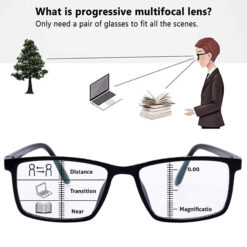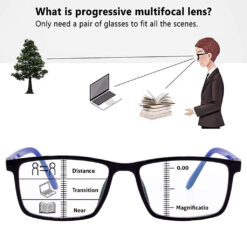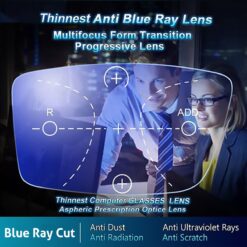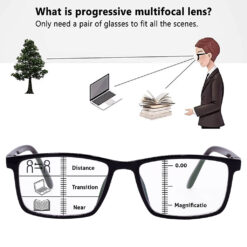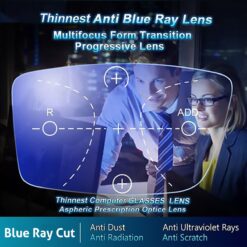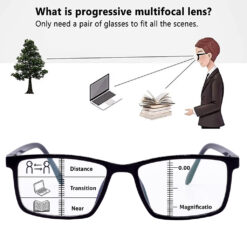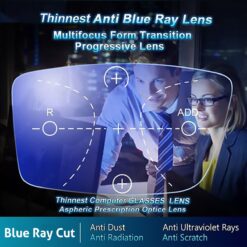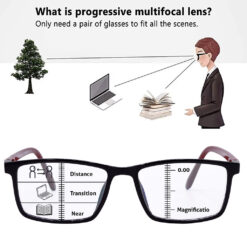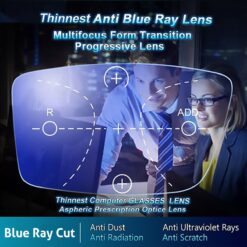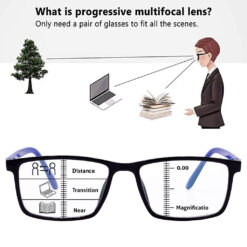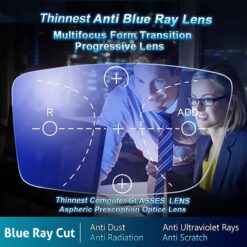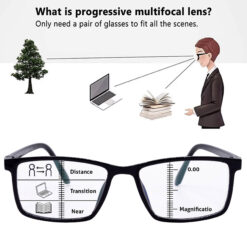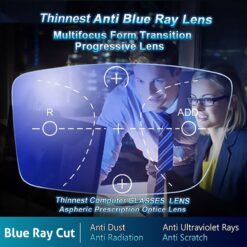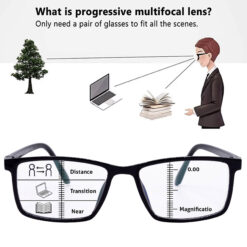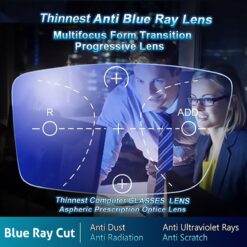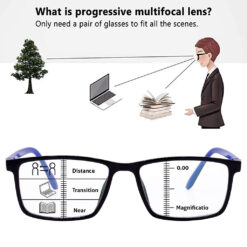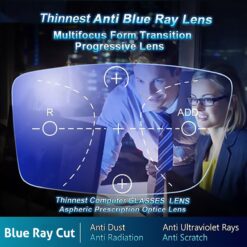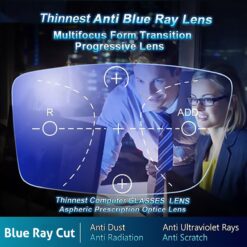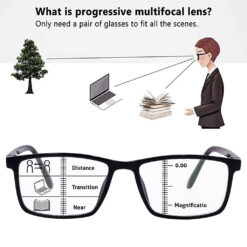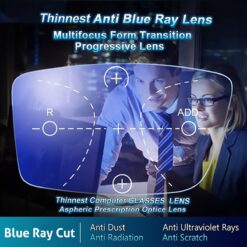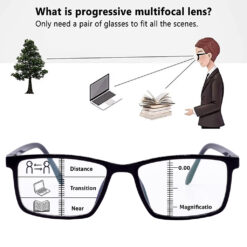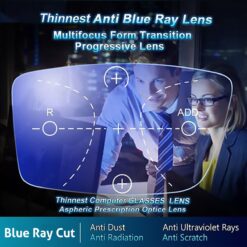Progressive Reading Glasses
Progressive Reading Glasses
Progressive Reading Glasses
Progressive Reading Glasses
Progressive Reading Glasses
Progressive Reading Glasses
Progressive Reading Glasses
Progressive Reading Glasses
Progressive Reading Glasses
Progressive Reading Glasses
Progressive Reading Glasses
Progressive Reading Glasses
Progressive Reading Glasses
Progressive Reading Glasses
Progressive Reading Glasses
Buy Best Progressive Glasses Online: Complete Buying Guide for Indian Customers
Gone are the days when you needed multiple pairs of glasses cluttering your life. If you’re tired of constantly switching between reading glasses and distance specs, progressive glasses offer the perfect solution that millions of Indians are embracing. But here’s what most people don’t realize – choosing the right progressive lenses can make the difference between crystal-clear vision and constant frustration.
Progressive glasses have revolutionized how we approach vision correction, especially for those dealing with presbyopia. Whether you’re a busy professional juggling between computer screens and presentations, or someone who loves reading but also enjoys outdoor activities, these innovative lenses adapt to your lifestyle seamlessly. What makes them even more appealing is that you can now buy high-quality progressive glasses online at surprisingly affordable prices.
The Indian eyewear market has witnessed tremendous growth in progressive lens adoption, with prices starting as low as ₹1,250 for branded options like Titan’s Neo Progressive technology. This dramatic shift toward online purchasing has made premium vision correction accessible to middle-class families across India, breaking the traditional barriers of expensive optical stores.
What Are Progressive Glasses? Understanding the Basics
Progressive glasses represent one of the most significant advances in vision correction technology. These multifocal lenses contain multiple prescriptions within a single lens, seamlessly transitioning from distance vision at the top to reading vision at the bottom, with intermediate vision in between. Think of them as three different pairs of glasses merged into one sophisticated lens design.
The magic lies in their gradual power change across the lens surface. When you look through the upper portion, you get clear distance vision for driving or watching television. The middle section provides perfect intermediate vision for computer work or cooking. The lower section offers sharp near vision for reading books or checking your smartphone. This smooth transition happens without any visible lines, unlike traditional bifocals that have obvious dividing lines.
What sets progressive lenses apart is their ability to mimic natural vision. Your eyes naturally adjust focus when looking at different distances, and progressive lenses work similarly. Instead of abruptly jumping between prescriptions like bifocals do, they provide a continuous gradient of power. This means you can move your eyes naturally from distance to near vision without the jarring visual jumps that make some people dizzy with traditional multifocals.
The technology behind these lenses is quite sophisticated. Modern progressive lenses use advanced mathematical algorithms and precision manufacturing to create smooth optical transitions. Each lens contains approximately 25 different power zones, all seamlessly blended to provide clear vision at virtually any distance you need. This complexity explains why quality progressive lenses represent such excellent value despite their higher initial cost compared to single-vision lenses.
Progressive Glasses Meaning and How They Work
Understanding progressive glasses meaning starts with recognizing why they’re called “progressive.” The name refers to the progressive or gradual change in lens power from top to bottom. Unlike bifocals where you have two distinct zones separated by a visible line, progressive lenses offer a smooth, continuous transition between different viewing distances.
The way progressive lenses work is remarkably intuitive once you understand the concept. The top third of the lens contains your distance prescription, perfect for activities like driving, watching movies, or looking at distant objects. As your eyes move downward through the lens, the power gradually increases to provide clear intermediate vision – ideal for computer screens, dashboard displays, or items at arm’s length.
The bottom third of the lens reaches maximum reading power, allowing you to see small print, smartphone screens, or detailed close-up work with perfect clarity. The transition between these zones is so gradual that most users adapt within a week or two, though some people adjust within hours. This seamless progression eliminates the need to tilt your head up and down to find the right viewing zone, as you might with bifocals.
Here’s something interesting about how your brain adapts to progressive lenses: within the first few days of wearing them, your visual cortex learns to automatically direct your eyes to the appropriate zone of the lens based on what you’re trying to see. This unconscious adaptation process makes progressive glasses feel completely natural after the initial adjustment period. Your eyes naturally learn to look through the distance zone when spotting a friend across the street, shift to the intermediate zone when checking your car’s speedometer, and move to the reading zone when texting.
Types of Progressive Lenses Available
The progressive lens market offers several distinct categories, each designed to meet different visual needs and budgets. Understanding these options helps you make an informed choice that matches your lifestyle and financial considerations.
Standard Progressive Lenses
Standard progressive lenses represent the entry point into multifocal vision correction. These lenses use established designs that have been refined over decades of development. Priced typically between ₹1200-₹8,000 in India, they offer reliable vision correction for distance, intermediate, and near tasks.
The main characteristic of standard progressives is their wider corridor design, which means you need larger frames to accommodate all viewing zones effectively. While this might seem limiting, many users find standard lenses perfectly adequate for their daily needs. The reading area tends to be generous, making them excellent for people who spend considerable time reading books, newspapers, or documents. However, you might experience some peripheral distortion, especially when first adapting to the lenses.
Standard lenses work well for people with straightforward prescriptions who don’t require highly customized solutions. They’re manufactured using conventional processes and don’t account for individual facial anatomy or frame positioning. Despite these limitations, millions of people worldwide use standard progressive lenses successfully, making them a proven technology for everyday vision correction.
Premium Progressive Lenses
Premium progressive lenses represent a significant step up in technology and visual performance. These lenses incorporate advanced freeform manufacturing technology that creates truly customized optical surfaces. Priced between ₹4,000-₹25,000 depending on the brand and features, they offer substantially wider viewing areas and reduced peripheral distortion.
What makes premium lenses special is their personalization capabilities. They account for your specific prescription, frame choice, facial anatomy, and even how you typically hold your head when reading. This customization results in up to 40% wider viewing areas compared to standard progressives. The expanded viewing zones mean less head movement is required to find the sweet spot for different distances.
Premium progressive lenses also feature advanced coating technologies. Many include anti-reflective treatments that reduce glare from computer screens and overhead lighting. Some incorporate blue light filtering to protect against digital eye strain, while others offer photochromic properties that darken in sunlight. These additional features make premium lenses particularly valuable for people with active lifestyles or demanding visual requirements.
Custom Progressive Lenses
Custom progressive lenses represent the pinnacle of vision correction technology. These lenses are individually crafted based on detailed measurements of your eyes, face, and wearing preferences. While more expensive, typically costing ₹2,000 or more, they provide unmatched visual comfort and clarity.
The customization process involves precise measurements of how the frames sit on your face, your natural head posture, and your specific visual habits. For instance, if you spend most of your day reading, the lens design can be optimized to provide a larger, more comfortable reading zone. If you’re primarily a computer user, the intermediate zone can be enhanced for better screen viewing.
Custom lenses also address individual anatomical differences that affect vision quality. Factors like pupillary distance, vertex distance (how far the lens sits from your eye), and pantoscopic tilt (the angle at which frames sit on your face) are all precisely measured and incorporated into the lens design. This attention to detail results in faster adaptation times and superior visual comfort compared to standard or even premium progressive lenses.
Best Progressive Glasses Benefits for Daily Life
Progressive glasses transform daily life in ways that extend far beyond simple vision correction. Users consistently report improved quality of life, enhanced productivity, and greater confidence in both professional and personal settings.
Clear Vision at All Distances
The most obvious benefit of progressive glasses is comprehensive vision correction without the need for multiple pairs of glasses. Imagine starting your morning by reading the newspaper clearly, then driving to work with perfect distance vision, spending your day comfortably working on computers, and ending the evening reading a book – all with the same pair of glasses. This seamless transition between activities eliminates the frustration and inconvenience of constantly switching between different pairs of glasses.
Research indicates that progressive lens users are significantly more satisfied with their vision quality compared to those using separate reading and distance glasses. The continuous range of clear vision means you never have to search for the right pair of glasses or worry about forgetting your reading glasses when you need them. This convenience becomes particularly valuable during travel, meetings, or any situation where multiple visual tasks are required.
Professional environments especially benefit from progressive lenses. Consider a typical office worker who needs to read documents, work on a computer, and participate in presentations. With progressive lenses, they can smoothly transition between these tasks without the disruption of changing glasses. This smooth workflow leads to improved productivity and reduced eye strain throughout the workday.
Natural Visual Experience
Progressive lenses provide the most natural visual experience available in corrective eyewear. Unlike bifocals that create jarring visual jumps between zones, progressives mimic how your natural vision worked before presbyopia developed. The gradual power change allows your eyes to move naturally between different distances without conscious effort.
This natural vision experience has psychological benefits as well. Many users report feeling more youthful and confident when wearing progressive lenses compared to traditional bifocals. The absence of visible lines means others can’t immediately identify that you’re wearing multifocal lenses. This aesthetic advantage is particularly important for people who are conscious about aging or professional image concerns.
The natural visual flow also reduces the cognitive load of vision correction. With bifocals, your brain must consciously direct your eyes to the correct zone for each task. Progressive lenses eliminate this mental effort, allowing your visual system to work more intuitively. This reduced cognitive demand can help decrease mental fatigue, especially during long periods of varied visual tasks.
No Visible Lines
The cosmetic advantage of line-free lenses cannot be overstated in today’s appearance-conscious society. Traditional bifocals and trifocals have obvious lines that immediately signal the wearer’s age or vision problems. Progressive lenses look identical to regular single-vision glasses, maintaining a youthful, professional appearance regardless of your age or prescription needs.
This aesthetic benefit extends beyond vanity – it affects how others perceive you professionally and socially. Studies suggest that people wearing line-free progressive lenses are perceived as more capable and dynamic compared to those wearing traditional bifocals. In competitive professional environments, this perception advantage can be significant for career advancement and client relationships.
The seamless appearance also offers psychological benefits for the wearer. Many people report feeling more confident and less self-conscious about their vision correction when wearing progressive lenses. This increased confidence often translates to more active social engagement and willingness to participate in activities they might have avoided with more obvious vision aids.
Progressive Glasses vs Bifocal vs Multifocal: Key Differences
Understanding the distinctions between different types of multifocal lenses helps you make an informed decision that matches your specific needs and preferences. Each type offers unique advantages and limitations that suit different lifestyles and visual requirements.
Progressive vs Bifocal Comparison
The fundamental difference between progressive and bifocal lenses lies in their design approach and visual experience. Bifocal lenses have two distinct optical zones separated by a visible line – the upper portion for distance vision and the lower segment for reading. This binary design provides clear vision at exactly two distances but offers no intermediate vision support.
Progressive lenses, conversely, provide continuous vision correction across all distances through a gradient power design. Where bifocals force you to abruptly shift between two viewing zones, progressives allow smooth transitions between distance, intermediate, and near vision. This fundamental design difference impacts everything from visual comfort to aesthetic appeal.
From a practical standpoint, bifocals might seem simpler initially because the distinct zones make it obvious where to look for different tasks. However, this apparent simplicity comes with significant limitations. The visible line can be distracting and creates an abrupt visual jump when moving between zones, often causing disorientation or mild nausea. The complete absence of intermediate vision support makes computer work or other arm’s-length activities challenging.
Cost considerations also favor progressives in the long run. While bifocals might have a lower initial purchase price, progressive users often find they need fewer pairs of specialty glasses for different activities. The comprehensive vision correction of progressives eliminates the need for separate computer glasses or intermediate-distance specs that bifocal users often require.
Multifocal vs Varifocal Glasses
The terms “multifocal” and “varifocal” are often used interchangeably, but they have subtle distinctions that matter for consumers. Multifocal is the broader category that includes any lens with multiple focal points – this encompasses bifocals, trifocals, and progressive lenses. Varifocal specifically refers to lenses with variable focus, which typically means progressive lenses with smooth transitions between viewing zones.
In practical terms, when someone mentions varifocal glasses, they’re usually referring to progressive lenses without visible lines. The key advantage of varifocal design is the elimination of the abrupt transitions found in traditional multifocals. Instead of distinct zones with sharp boundaries, varifocal lenses provide gradual power changes that create more natural vision.
The choice between different multifocal types often depends on adaptation preferences and lifestyle needs. Some people find traditional bifocals easier to adapt to initially because the distinct zones provide clear visual cues. However, most users who successfully adapt to varifocal lenses report superior long-term satisfaction due to the more natural visual experience. The wider range of clear vision zones in varifocals also provides better support for modern lifestyle activities that involve frequent focus changes between different distances.
Are Progressive Glasses Worth It? Cost-Benefit Analysis
The question of whether progressive glasses justify their cost requires examining both immediate expenses and long-term value propositions. While the initial investment is typically higher than single-vision or bifocal lenses, the comprehensive benefits often provide excellent return on investment.
Long-term Value Proposition
Progressive glasses represent exceptional long-term value when you consider their comprehensive vision correction capabilities. Instead of purchasing separate pairs for reading, computer work, and distance vision – which could easily cost ₹2,000-₹25,000 total – progressive lenses provide all three corrections in one pair. This consolidation not only saves money but also reduces the complexity of managing multiple pairs of glasses.
The durability factor also contributes to long-term value. Quality progressive lenses, when properly cared for, can last several years before prescription changes necessitate replacement. During this period, they eliminate the need for multiple specialty glasses that might otherwise require periodic updates. The convenience of having comprehensive vision correction in one pair often prevents the purchase of additional glasses for specific activities.
Professional benefits add another dimension to the value calculation. Many users report increased productivity and reduced eye strain when using progressive lenses for work activities. This improved performance can have career implications that far exceed the initial lens investment. The ability to seamlessly transition between different visual tasks without glasses changes can be particularly valuable in professional presentations, client meetings, or detail-oriented work.
Lifestyle Convenience Factors
The lifestyle advantages of progressive glasses extend far beyond basic vision correction. Consider the daily frustration of managing multiple pairs of glasses – constantly searching for the right pair, dealing with forgotten reading glasses during important meetings, or the embarrassment of being unable to read a menu at a restaurant. Progressive lenses eliminate these scenarios entirely.
Travel convenience represents a significant lifestyle benefit. Instead of packing multiple pairs of glasses plus backups, progressive lens users need only one pair for comprehensive vision correction. This simplification reduces luggage requirements and eliminates the anxiety of forgetting essential vision correction while traveling. The ability to handle unexpected visual tasks – reading small print on travel documents, viewing distant landmarks, checking phone screens – with one pair of glasses provides remarkable peace of mind.
Social situations also improve significantly with progressive lenses. The seamless transition between reading dinner menus, participating in conversation with people at various distances, and handling bill payments creates a more natural, confident social experience. The absence of visible lines means others don’t immediately recognize your multifocal needs, which many users find psychologically beneficial in both professional and social contexts.
Best Progressive Glasses Brands Available in India
The Indian progressive lens market offers an impressive range of options, from international premium brands to high-quality domestic alternatives. Understanding the strengths of different manufacturers helps you choose lenses that match both your visual needs and budget constraints.
International Premium Brands
International brands dominate the premium segment of India’s progressive lens market, offering cutting-edge technology and proven performance records. These brands typically invest heavily in research and development, resulting in superior optical designs and innovative features that justify their higher price points.
Essilor Varilux Series
Essilor’s Varilux progressive lenses represent the gold standard in multifocal technology. The French company pioneered progressive lens technology in 1959 and continues to innovate with each generation. Their latest Varilux XR Series incorporates artificial intelligence and behavioral analytics to optimize lens performance for individual users.
The Varilux range in India starts around ₹5,000 for basic models and extends to ₹20,000 for premium customized options. What sets Varilux apart is their W.A.V.E. Technology, which provides exceptionally sharp vision across all zones while minimizing peripheral distortion. The series includes specialized versions for different lifestyles – Varilux Comfort for first-time progressive users, Varilux Physio for active lifestyles, and Varilux X Series for digital device users.
Customer feedback consistently highlights Varilux lenses’ superior adaptation ease and long-term comfort. The wide intermediate zone makes them particularly suitable for computer-intensive work, while the generous reading area accommodates extended reading sessions. Premium Varilux lenses also feature Crizal anti-reflective coatings that reduce glare from screens and artificial lighting, enhancing visual comfort in modern environments.
Carl Zeiss Progressive Range
Carl Zeiss represents German precision engineering in progressive lens technology. Their SmartLife Progressive series, priced between ₹6,000-₹25,000, incorporates advanced freeform technology and considers modern lifestyle demands including smartphone and tablet usage. Zeiss lenses are particularly renowned for their optical clarity and minimal distortion characteristics.
The Zeiss SmartLife Individual 3 represents their flagship progressive design. These lenses consider over 40,000 data points during manufacturing, creating truly personalized optical surfaces tailored to individual facial anatomy and visual habits. The result is exceptionally wide viewing zones and faster adaptation compared to conventional progressive designs. Zeiss also offers specialized versions like DriveSafe progressives that enhance vision for nighttime driving and challenging lighting conditions.
Professional feedback consistently rates Zeiss progressives among the most comfortable options available. The DuravisionPlatinum coatings provide exceptional durability and easy cleaning properties. However, the premium pricing means these lenses are typically chosen by users who prioritize ultimate optical performance over budget considerations.
Affordable Indian Options
The domestic Indian progressive lens market has evolved dramatically, offering high-quality alternatives that provide excellent value without compromising essential performance characteristics. These options make progressive vision correction accessible to India’s growing middle class.
Hrinkar Progressive
Hrinkar has revolutionized affordable progressive lenses in India with their Jaivik Progressive technology. Priced at just ₹1,250, these lenses offer freeform technology typically found in much more expensive international alternatives. The company’s association with the respected Tata Group provides additional confidence in quality and service standards.
The Jaivik Progressive lenses feature 99.6% optical clarity and include scratch-resistant and anti-glare coatings as standard. They’re specifically designed for first-time progressive users, with wider adaptation zones that ease the transition from single-vision or bifocal lenses. The 15-day adaptation guarantee provides additional peace of mind for new users concerned about adjustment challenges.
What makes Titan’s offering particularly attractive is the comprehensive package approach. The price includes professional fitting, follow-up adjustments, and comprehensive warranty coverage. Their extensive retail network across India ensures accessible service and support, addressing a common concern with progressive lens adaptation. Customer reviews consistently highlight the excellent value proposition, though some users note that premium international brands offer wider viewing zones for demanding visual tasks.
Budget-Friendly Alternatives
Several other domestic and value-oriented international brands provide progressive lenses in the ₹2,500-₹9,000 range. Kodak progressive lenses, manufactured under license in India, offer Easy Adapt technology specifically designed for first-time users. Nova progressive lenses provide digital-friendly designs optimized for computer and smartphone usage at competitive prices.
GKB Opticals, with their extensive retail presence, offers customizable progressive options starting around ₹2,500. While these lenses may not feature the advanced personalization of premium brands, they provide reliable vision correction for users with straightforward prescriptions. The key advantage is accessibility – with widespread availability and competitive pricing, these options make progressive vision correction available to broader segments of the Indian population.
Budget progressive lenses typically use simpler manufacturing processes and standardized designs rather than custom optimization. However, for many users, especially those with mild to moderate prescriptions, these limitations don’t significantly impact daily visual performance. The substantial cost savings can be redirected toward premium frame selection or additional pairs for specific activities.
Progressive Glasses Price Guide for Indian Market
Understanding progressive lens pricing in India requires considering the complex interplay of technology, brand positioning, manufacturing location, and additional features. The market offers remarkable price diversity, from affordable domestic options to premium international alternatives.
Entry-Level Price Range (₹2,500-₹5,000)
The entry-level progressive lens segment provides excellent access to multifocal technology for budget-conscious consumers. These lenses typically use established designs and conventional manufacturing processes, focusing on reliable performance rather than cutting-edge customization features. Despite their lower cost, many entry-level progressives provide satisfactory vision correction for users with straightforward prescriptions.
Domestic brands dominate this price segment, with companies like GKB Opticals, Nova, and various private-label manufacturers offering competitively priced options. These lenses often feature basic anti-reflective coatings and scratch resistance as standard inclusions. The optical designs, while not personalized, are based on extensive population studies that work well for average anatomical measurements and visual requirements.
The main limitations in this price range involve smaller viewing zones and potentially longer adaptation periods. The peripheral areas may show more distortion compared to premium lenses, and the intermediate viewing zone might be narrower than ideal for extensive computer work. However, for users primarily concerned with reading and distance vision, with occasional intermediate tasks, these lenses provide excellent value. The significant cost savings can be allocated toward premium frames or protective coatings that enhance durability and visual comfort.
Mid-Range Options (₹5,000-₹15,000)
The mid-range progressive lens segment offers the best balance of performance and value for most Indian consumers. This price category includes entry-level offerings from premium international brands as well as advanced domestic options with enhanced features. Lenses in this range typically incorporate some degree of customization and feature improved optical designs compared to budget alternatives.
Essilor’s basic Varilux models, Hoya’s entry progressive lenses, and Nikon’s SeeCoat progressive options populate this segment. These lenses often feature wider viewing zones, reduced peripheral distortion, and faster adaptation characteristics compared to entry-level alternatives. Manufacturing quality is typically higher, with more precise optical surfacing and better coating technologies. Many mid-range lenses also include enhanced anti-reflective treatments that improve visual comfort in various lighting conditions.
The mid-range segment also includes specialized progressive designs optimized for specific activities. Computer progressive lenses with enhanced intermediate zones, driving progressives with improved distance vision characteristics, and reading progressives with enlarged near zones are common in this price category. This specialization allows users to optimize their progressive lenses for their primary visual activities while maintaining comprehensive distance correction capabilities.
Premium Progressive Lenses (₹15,000+)
Premium progressive lenses represent the pinnacle of multifocal technology, incorporating the latest advances in optical design, manufacturing precision, and personalization capabilities. These lenses are typically manufactured using advanced freeform technology that creates truly customized optical surfaces based on individual measurements and lifestyle requirements. The premium segment justifies higher costs through superior visual performance, wider viewing zones, and enhanced adaptation characteristics.
Carl Zeiss SmartLife Individual, Essilor Varilux X Series, and Rodenstock progressive lenses dominate the premium category. These lenses consider factors like dominant eye preference, reading distance preferences, frame positioning, and facial anatomy during the design process. The result is exceptionally wide viewing zones that can be up to 40% larger than standard progressive designs. Advanced coating technologies, including blue light filtering, anti-fog treatments, and enhanced durability coatings, are typically included as standard features.
The premium segment also offers specialized solutions for unique visual challenges. Lenses designed for specific occupations, extreme prescriptions, or unusual visual requirements are available through custom ordering processes. These solutions often involve consultation with optical engineers and may require specialized fitting procedures. While expensive, premium progressive lenses provide unmatched visual comfort and performance for users with demanding visual requirements or those who prioritize ultimate optical quality.
Blue Light Progressive Glasses: Modern Eye Protection
The integration of blue light filtering technology with progressive lenses addresses one of the most significant vision challenges of the digital age. With average screen exposure exceeding 7 hours daily for many professionals, blue light progressive glasses have evolved from luxury items to essential tools for maintaining eye health and visual comfort.
Digital Eye Strain Relief
Blue light progressive glasses provide comprehensive protection against the cumulative effects of prolonged digital device usage. The blue light filtering technology works by selectively blocking high-energy visible light wavelengths (380-490 nanometers) while maintaining natural color perception. This selective filtering reduces the photochemical stress on retinal cells that contributes to digital eye strain symptoms including dry eyes, headaches, and visual fatigue.
The progressive lens component ensures that blue light protection extends across all viewing distances. Whether you’re reading emails on your smartphone, working on computer spreadsheets, or watching television from across the room, the blue light filtering remains active. This comprehensive protection is particularly valuable for professionals who transition frequently between different digital devices throughout their workday.
Clinical studies suggest that blue light filtering can reduce eye strain symptoms by up to 30% in regular computer users. The combination with progressive lenses amplifies this benefit by eliminating the need to change glasses when switching between different digital tasks. Users report decreased end-of-day eye fatigue and improved visual comfort during extended screen sessions. The reduction in eye strain often translates to improved productivity and reduced tendency to avoid necessary digital tasks due to visual discomfort.
Better Sleep Quality
The circadian rhythm disruption caused by evening blue light exposure has become a significant health concern in our increasingly digital society. Blue light progressive glasses help maintain natural sleep-wake cycles by reducing blue light exposure during evening hours when melatonin production should increase. This is particularly important for people who work late or use digital devices for entertainment in the evening.
Research indicates that blue light exposure within 2-3 hours before bedtime can delay sleep onset by up to 45 minutes. Progressive lenses with blue light filtering help mitigate this effect while maintaining the convenience of comprehensive vision correction. Users don’t need to remember to switch to specialized computer glasses in the evening – their progressive lenses provide consistent protection throughout the day.
The sleep quality benefits extend beyond faster sleep onset. Users often report more restful sleep and reduced nighttime wake-ups when consistently using blue light filtering glasses during evening digital device usage. This improved sleep quality creates a positive feedback loop – better sleep leads to reduced daytime eye strain, which further enhances the comfort benefits of progressive lenses. The combination addresses both immediate visual comfort and long-term health considerations associated with modern digital lifestyles.
Enhanced Screen Comfort
Modern blue light progressive glasses incorporate advanced filtering technologies that maintain color accuracy while reducing eye strain. Unlike early blue light filters that created noticeable color distortion, current technologies selectively target the most problematic blue light wavelengths while preserving color perception essential for professional work. This is particularly important for users in creative fields who require accurate color representation.
The enhanced screen comfort extends to reduced glare and improved contrast perception. Blue light filtering often works synergistically with anti-reflective coatings to minimize reflections from both artificial lighting and digital screens. This combination creates more comfortable viewing conditions in typical office environments with mixed lighting sources. Users report particular benefits when working in environments with LED lighting, which tends to have higher blue light content than traditional incandescent lighting.
The comfort benefits are particularly pronounced during extended visual tasks that require frequent focus changes. Video conferences that involve reading documents, taking notes, and viewing screen presentations benefit significantly from blue light progressive lenses. The reduced visual stress allows users to maintain concentration and visual comfort throughout long meetings or training sessions. Many users report that tasks they previously found visually fatiguing become more manageable with blue light progressive lenses.
How to Buy Progressive Glasses Online Safely
Purchasing progressive glasses online requires careful attention to technical details and measurement accuracy that traditional single-vision glasses don’t demand. The complexity of progressive lens fitting makes online purchasing more challenging, but proper preparation and knowledge can lead to excellent results while achieving significant cost savings.
Essential Measurements Required
Accurate measurements form the foundation of successful online progressive lens purchases. Beyond the basic prescription values, progressive lenses require precise fitting measurements that account for how the frames position on your face. The most critical measurement is pupillary distance (PD), which determines where the optical centers of the lenses align with your pupils.
Pupillary distance measurement requires precision within 1-2 millimeters for optimal progressive lens performance. While some online retailers provide measurement tools, the most accurate method involves professional measurement by an optometrist or optician. Many eye care professionals will provide PD measurements upon request, even if you plan to purchase glasses elsewhere. Some online retailers also offer video measurement services where professionals guide you through the measurement process using smartphone cameras.
Segment height measurement is equally critical for progressive lenses. This measurement determines where the reading zone begins in the lower portion of the lens. Incorrect segment height can result in uncomfortable head positioning requirements or insufficient reading area. The measurement involves determining the distance from the bottom of the lens to your lower eyelid when looking straight ahead. Most reputable online progressive lens retailers provide detailed instructions or video guides for accurate segment height measurement.
Prescription Reading Tips
Reading and interpreting progressive lens prescriptions requires understanding several technical specifications beyond basic vision correction values. Progressive prescriptions include “ADD” power values that indicate the additional magnification required for near vision. This ADD value typically ranges from +0.75 to +3.50 diopters, with higher values indicating more advanced presbyopia.
The prescription should also specify any prism corrections, cylinder powers for astigmatism correction, and axis orientations. These values must be entered precisely when ordering online, as even small errors can result in visual discomfort or adaptation difficulties. If your prescription includes terms you don’t understand, contact the prescribing eye care professional for clarification before placing your online order.
Prescription age is another crucial consideration for online purchases. Progressive lens prescriptions should be no more than two years old, and ideally within one year for optimal accuracy. Vision changes gradually, and outdated prescriptions can result in suboptimal lens performance even if the lens manufacturing and fitting are perfect. If your prescription is approaching expiration, consider scheduling an eye exam before ordering expensive progressive lenses online.
Frame Selection Guidelines
Frame selection for progressive lenses involves specific dimensional requirements that don’t apply to single-vision glasses. The lens height (B measurement) should ideally be at least 28-30 millimeters to accommodate all progressive zones comfortably. Smaller frames can severely limit the usable area for reading and intermediate vision, potentially making the progressive lenses ineffective for their intended purpose.
The bridge width and temple length also affect progressive lens performance by determining how the frames sit on your face. Frames that sit too high or too low can misalign the progressive zones with your natural eye movements. When shopping online, carefully compare the frame measurements to glasses you currently wear comfortably. Most online retailers provide detailed frame measurements, including lens width, bridge width, and temple length.
Frame style considerations extend beyond measurements to include lens curvature and wrap characteristics. Highly curved or wrapped frame styles can introduce optical distortions that interfere with progressive lens performance. For first-time progressive users, straight or slightly curved frames typically provide the most comfortable adaptation experience. Avoid extremely fashionable frame styles that might compromise lens performance until you’re experienced with progressive lens adaptation.
Progressive Lens Advantages and Disadvantages
A comprehensive understanding of progressive lens benefits and limitations helps set realistic expectations and guides decision-making. While progressive lenses offer remarkable advantages for most users, certain drawbacks require consideration, especially for first-time multifocal users.
Key Benefits Explained
The primary advantage of progressive lenses lies in their comprehensive vision correction capabilities without the aesthetic and functional limitations of lined multifocal lenses. Users can transition seamlessly between activities requiring different visual distances without changing glasses or adjusting to visible line transitions. This convenience transforms daily life by eliminating the constant mental tracking of which glasses are needed for specific tasks.
Visual naturalness represents another significant advantage of progressive lenses. The gradual power transition mimics how healthy young eyes naturally accommodate between distances. This similarity to natural vision typically results in more intuitive eye movements and reduced conscious effort in finding the appropriate lens zone for different tasks. Many users report that progressive lenses feel more “normal” than other multifocal options after the initial adaptation period.
The aesthetic benefits of line-free lenses provide psychological advantages that extend beyond mere appearance. Professional studies indicate that people wearing progressive lenses are perceived as more dynamic and capable compared to those wearing traditional bifocals. This perception advantage can be significant in competitive professional environments or social situations where confidence and capability impressions matter. The elimination of age-related vision stigma allows users to maintain a youthful appearance regardless of their presbyopia correction needs.
Potential Drawbacks to Consider
The most commonly reported disadvantage of progressive lenses is the adaptation period required for comfortable use. Unlike single-vision lenses that provide immediate comfort, progressive lenses require brain adaptation to learn optimal head and eye positioning for different visual tasks. This adaptation period varies significantly between individuals, ranging from a few days to several weeks, with most users achieving comfort within two weeks of consistent wear.
Peripheral distortion represents another limitation inherent in progressive lens design. The areas adjacent to the central vision corridor experience optical distortion that can cause images to appear curved or blurred. This peripheral distortion is most noticeable when making rapid eye movements or looking through the lens edges. While modern progressive designs minimize these effects, the distortion cannot be completely eliminated due to the fundamental physics of combining multiple prescriptions in a single lens.
Cost considerations make progressive lenses a significant investment compared to single-vision or traditional bifocal alternatives. Premium progressive lenses can cost several times more than basic single-vision lenses, and the higher initial investment must be weighed against the long-term convenience and comprehensive vision correction benefits. Additionally, progressive lenses typically require more frequent replacement than single-vision lenses due to their complexity and the potential for prescription changes that affect their multiple correction zones.
Adjustment Period Expectations
Understanding the progressive lens adaptation process helps set realistic expectations and reduces anxiety during the transition period. The initial few days typically involve learning to position your head optimally for different visual tasks. Instead of moving only your eyes, progressive lens users learn to point their nose toward objects they want to see clearly, ensuring optimal lens zone alignment.
Common adaptation symptoms include mild dizziness when walking, particularly on stairs or uneven surfaces. This occurs because the peripheral distortion can affect spatial perception until the brain learns to ignore these areas. Most users find that walking slower initially and being more deliberate about head movements helps minimize these effects. The symptoms typically resolve within the first week of consistent wear.
Reading adaptation often requires the most conscious adjustment during the initial period. New progressive users must learn to lower their chin slightly and look through the bottom portion of the lens for comfortable reading. This head position feels unnatural initially but becomes automatic within days of consistent practice. Many adaptation specialists recommend reading for extended periods during the first week to accelerate this learning process and build confidence with near vision tasks.
Best Place to Buy Progressive Glasses Online in India
The online progressive lens market in India has evolved significantly, with several retailers offering comprehensive services that rival traditional optical stores. Understanding the strengths and limitations of different online platforms helps ensure successful purchases and satisfactory long-term experiences.
What to Look for in Online Stores
Comprehensive measurement guidance is essential when evaluating online progressive lens retailers. Reputable platforms provide detailed instructions, video guides, or interactive tools for accurate pupillary distance and segment height measurements. Some advanced retailers offer video consultation services where optical professionals guide customers through the measurement process using smartphone cameras or specialized apps.
Return and exchange policies become particularly important for progressive lens purchases due to the adaptation challenges and precise fitting requirements. Look for retailers offering extended return periods specifically for progressive lenses, typically 30-60 days compared to standard 14-day returns for single-vision glasses. Some retailers provide progressive lens guarantees that cover remake costs if the initial lenses don’t provide satisfactory vision correction.
Professional consultation availability distinguishes premium online retailers from basic e-commerce platforms. Look for retailers offering chat support with licensed opticians, telephone consultations for complex prescriptions, or video calls for personalized fitting guidance. These services become invaluable when dealing with progressive lens complications or adaptation difficulties that require professional expertise to resolve.
Technical support capabilities should extend beyond initial purchase to include adjustment guidance and troubleshooting assistance. Progressive lenses often require minor adjustments to achieve optimal comfort, and online retailers should provide guidance for local adjustment services or procedures for returning lenses that require professional modification. Comprehensive warranty coverage that includes manufacturing defects, fitting errors, and adaptation difficulties provides additional confidence for online progressive lens purchases.
Progressive Reading Glasses for Different Age Groups
Progressive lens requirements evolve with age-related vision changes, making age-appropriate selection crucial for optimal visual comfort and adaptation success. Understanding these differences helps ensure that lens characteristics match individual needs and capabilities.
First-Time Progressive Users (40-45 years)
The early presbyopia age group typically experiences the easiest adaptation to progressive lenses due to retained accommodation flexibility and less advanced vision changes. First-time users in this age range often benefit from progressive lenses with larger intermediate zones to support continued computer work and active lifestyles. The ADD power requirements are typically lower (+0.75 to +1.50 diopters), allowing for more gradual transition zones and wider usable viewing areas.
Lifestyle considerations for this age group emphasize maintaining active professional and personal activities without vision-related limitations. Progressive lenses designed for first-time users often feature wider adaptation zones and reduced peripheral distortion to ease the transition from single-vision glasses. Many manufacturers offer specific “easy adaptation” progressive designs that prioritize comfort over maximum optical performance for this demographic.
Frame selection recommendations for first-time progressive users emphasize larger lens heights to provide generous viewing zones while adaptation occurs. As users become comfortable with progressive lens use, they can transition to more fashionable frame styles with potentially smaller lens areas. The initial frame choice should prioritize function over fashion to ensure positive first experiences that encourage continued progressive lens use.
Experienced Users (45+ years)
Experienced progressive lens users typically develop strong preferences for specific lens characteristics and may benefit from more specialized or premium progressive designs. As presbyopia advances, higher ADD powers (+2.00 to +3.50 diopters) become necessary, potentially requiring more sophisticated lens designs to maintain comfortable viewing zones across all distances.
Advanced age groups often benefit from progressive lenses optimized for specific activities or lifestyle requirements. Computer-intensive work might call for progressive lenses with enhanced intermediate zones, while reading-focused lifestyles might benefit from designs with enlarged near vision areas. Premium progressive lenses that accommodate these specific needs become more cost-effective as users develop clear preferences for their visual priorities.
Experienced users also typically appreciate advanced lens technologies that weren’t available when they first adopted progressive lenses. Features like blue light filtering, enhanced anti-reflective coatings, and photochromic properties provide added value for users who understand progressive lens benefits and are willing to invest in optimal visual comfort. The accumulated experience with progressive lens adaptation also allows these users to adapt more quickly to advanced lens designs that might challenge first-time users.
Care and Maintenance Tips for Progressive Glasses
Proper care and maintenance of progressive glasses extends their lifespan, maintains optimal visual performance, and protects the significant investment these lenses represent. The complex optical surfaces and premium coatings typical of progressive lenses require specific care procedures that differ from basic single-vision lens maintenance.
Cleaning techniques for progressive lenses require gentle methods that preserve anti-reflective and other premium coatings. Use only microfiber cloths designed for optical lenses, avoiding paper towels, clothing, or tissues that can create microscopic scratches. Rinse lenses with lukewarm water before cleaning to remove abrasive particles, then apply a small amount of lens cleaning solution specifically designed for coated lenses. Avoid household cleaners, soaps, or alcohol-based products that can damage lens coatings.
Storage practices significantly impact progressive lens longevity and performance. Always store glasses in protective cases when not in use, with lenses facing upward to prevent contact with case surfaces. Avoid leaving glasses in cars, near heat sources, or in direct sunlight, as temperature extremes can affect lens coatings and frame materials. When placing glasses down temporarily, always rest them on their arms rather than lens-down to prevent surface scratches.
Professional maintenance schedules help ensure optimal performance throughout the lens lifespan. Have progressive glasses professionally cleaned and adjusted every 3-6 months to maintain proper fit and alignment. Loose or misaligned frames can affect progressive lens performance by changing the relationship between lens zones and eye position. Professional cleaning removes accumulated buildup that home cleaning cannot address and allows for inspection of coating condition and potential replacement needs.
Conclusion
Progressive glasses represent a revolutionary approach to vision correction that transforms how people experience the world around them. From seamless transitions between reading fine print and admiring distant landscapes to the confidence that comes with line-free lenses, these optical marvels have become essential tools for millions of Indians navigating modern life’s visual demands.
The journey to finding your perfect progressive glasses doesn’t have to be overwhelming. Whether you choose premium international brands like Essilor Varilux or Carl Zeiss for their cutting-edge technology, or opt for excellent value domestic options like Hrinkar Jaivik Progressive at ₹1,250, the key lies in understanding your specific needs and lifestyle requirements. The Indian market now offers unprecedented access to quality progressive lenses across every budget range, making this technology available to families who previously couldn’t afford such advanced vision correction.
Remember that successful progressive lens adoption requires patience during the adaptation period and careful attention to proper fitting measurements. The investment in quality progressive glasses pays dividends through improved productivity, enhanced confidence, and the simple pleasure of clear vision at every distance. With proper care and professional guidance, your progressive glasses will provide years of visual freedom that makes the initial investment worthwhile many times over

